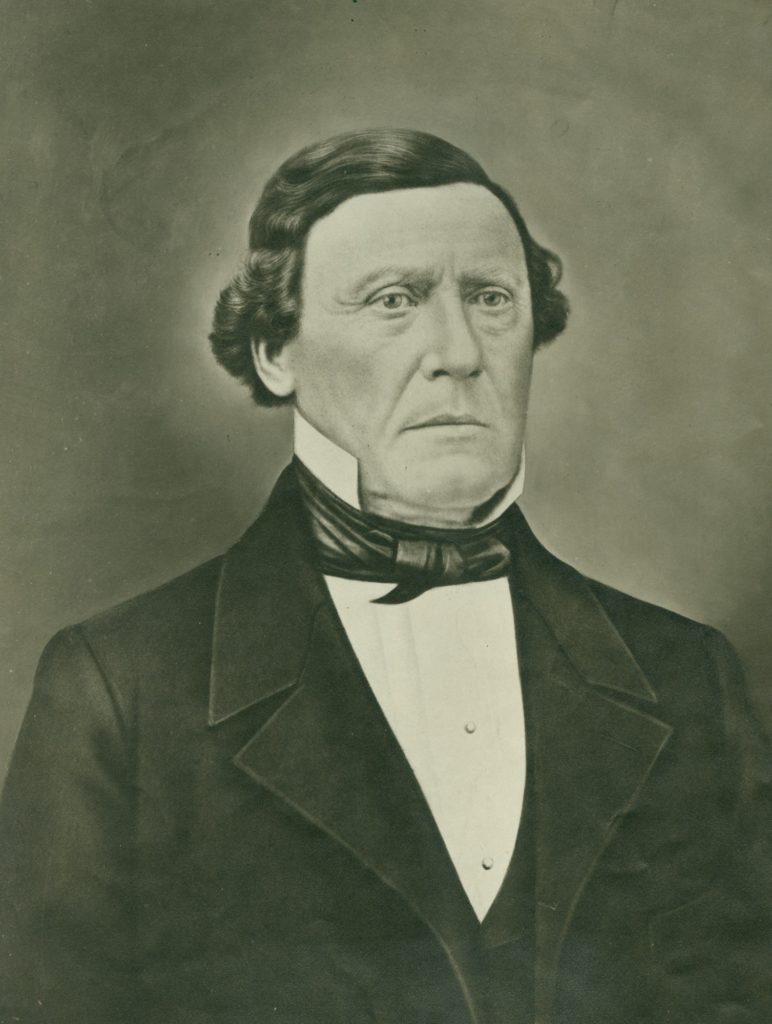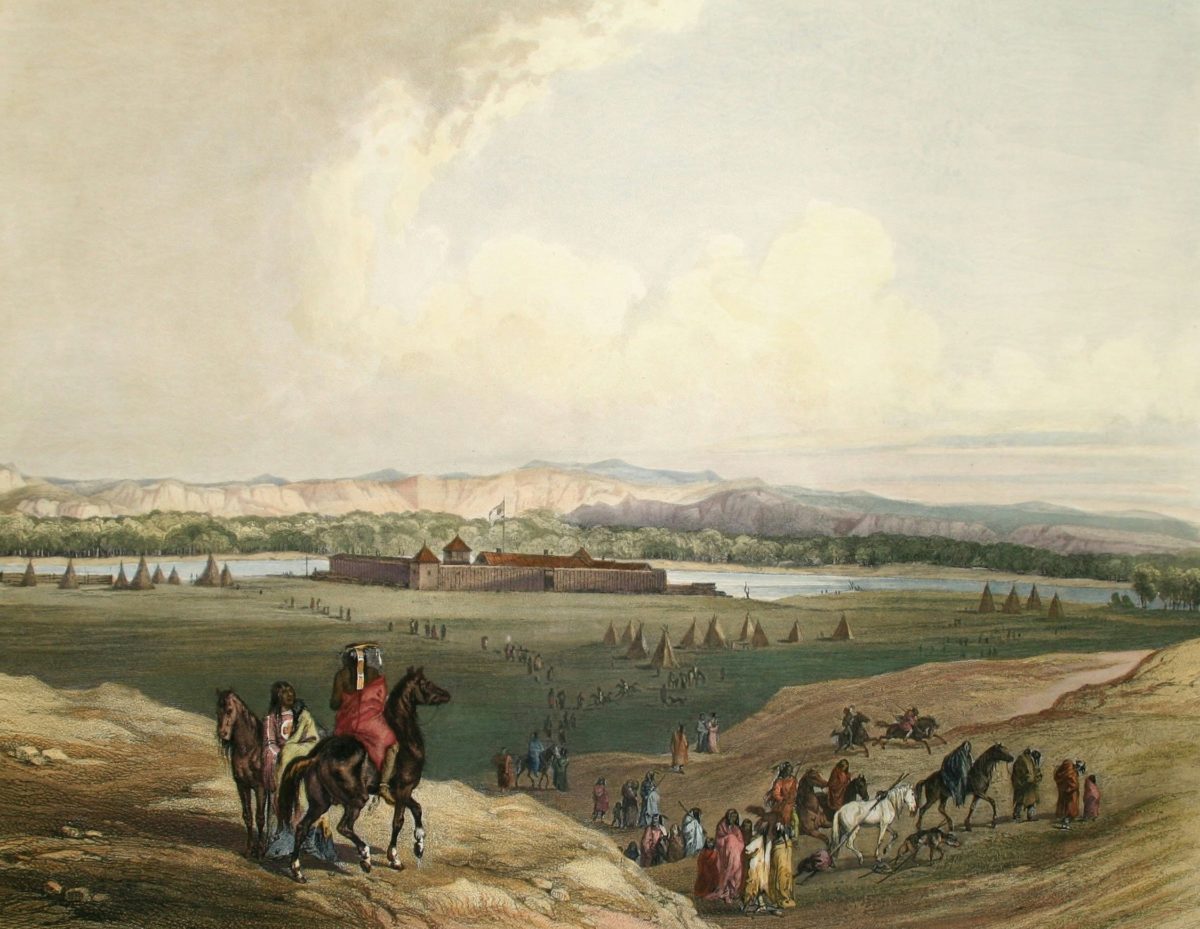From Fort Union, the Scot ruled an economic empire.
The so-called king was ensconced at the head of a long table where well-dressed men sat down according to rank. Servants set before them the finest wild game and culinary delights. Raising glasses of iced wines and liqueurs, the jolly company proposed toasts.
This 1830s feast did not occur in a European kingdom or even on the Eastern Seaboard of the United States. Formal dinner parties were a regular occurrence at Fort Union, an outpost on the American frontier 1,800 river-miles from St. Louis. The head man, Kenneth McKenzie, ruled an economic empire larger than most European countries. How did this Scot gain such power and influence that both friends and enemies called him the “King of the Upper Missouri”?
Kenneth McKenzie, born on April 15, 1797, in Scotland, received a good education, emigrated to Canada in 1816 and worked for the North West Company. For years, the Nor’ Westers were the only competition to the powerful Hudson’s Bay Company. In 1821 the two companies merged, retaining the name Hudson’s Bay Company. McKenzie and many other Nor’ Westers lost their jobs.
McKenzie and two friends drifted south to the U.S. frontier, where they joined with several Americans and established the Columbia Fur Company on the Upper Mississippi River. By 1823, they had expanded to the Upper Missouri River. Their largest post was Fort Tecumseh, located on the Missouri River in present-day South Dakota.
McKenzie emerged as the chief partner of the Columbia Fur Company, using Fort Tecumseh as headquarters from 1822 to 1829. In addition to trading with the tribes for beaver pelts, McKenzie realized there was a market for buffalo robes in the eastern United States. By 1826, the Columbia Fur Company was trading for furs and buffalo robes with the Lakota, Arikara, Hidatsa, Mandan, Yankton, Ponca and Omaha tribes.

The buffalo robe trade made the Columbia Fur Company profitable. John Jacob Astor, principal partner of the American Fur Company, bought them out in 1827, with the stipulation that McKenzie and his partners become partners in the American Fur Company. The former Columbia Fur Company’s Missouri River forts remained semiautonomous as the Upper Missouri Outfit. McKenzie became the outfit’s chief agent.
The American Fur Company expanded up the Missouri River into territory under the influence of the Hudson’s Bay Company. McKenzie recognized that to capture the trade from that formidable organization, he needed a fort near the juncture of the Yellowstone and Missouri rivers along the present-day North Dakota– Montana border. In 1828 he sent workers to the rivers’ confluence to build a trading cabin for the Assiniboine tribe. That same year, McKenzie sent men to the Rocky Mountains to trade at the rendezvous with the free trappers.
In 1829 McKenzie sent workers to build a fort at the Assiniboine trading cabin and named it Fort Union. He moved his headquarters there in 1830. People began referring to the American Fur Company as “the Company” and to any competition as “the Opposition.” At the same time, people began calling McKenzie the King of the Upper Missouri.
McKenzie believed if steamboats could travel up the Missouri River to Fort Union, trade would vastly improve. In August 1830, he went to St. Louis to encourage the partners to buy a steamboat. They balked, but McKenzie convinced one of the partners, Pierre Chouteau Jr., and together they swayed the others. The Company had a steamboat built, naming it Yellow Stone. It traveled as far as Fort Tecumseh in 1831, but low water kept it from proceeding farther upriver. The next year, on June 17, 1832, Yellow Stone arrived at Fort Union. Steamboats soon increased the Company’s efficiency, moving furs, hides and trade goods faster and easier.
McKenzie wanted to trade with the Blackfeet, who considered all Americans their enemies and traded exclusively with the Hudson’s Bay Company. In 1830 McKenzie sent Jacob Berger to the Blackfeet, inviting them to Fort Union to discuss trade prospects. Berger, an old Hudson’s Bay trapper and friend of the Blackfeet, brought a tribal delegation to Fort Union. After McKenzie provided presents and promised a good exchange for their furs, the Blackfeet agreed to allow the Company to build a trading post in their territory in present-day Montana.
During 1832, John Jacob Astor sold his shares in the American Fur Company to Pierre Chouteau Jr. and other partners, while McKenzie built Fort Cass on the Yellowstone River for trade with the Crow tribe. The Company was now trading with all major tribes on the Upper Missouri River.
McKenzie traveled to St. Louis and Washington, D.C., on business and returned to Fort Union on June 23, 1833, aboard the steamboat Assiniboine accompanying the German scientist Prince Maximilian and his personal artist, Karl Bodmer. On the night of July 5, McKenzie entertained the fort’s inhabitants and visiting tribes by shooting rockets into the air and tossing firecrackers into the crowd.
McKenzie read textbooks on medicine, chemistry and natural science. He collected Indian craftwork and natural curiosities. What’s more, he brought the latest in home entertainment to Fort Union—a magic lantern, the forerunner of the slide projector, and an electric spark generator. He sent to St. Louis for luxury items—brandy, cigars and oysters—and ordered a complete suit of armor from England.
When McKenzie arrived at Fort Union aboard Assiniboine in 1833, he brought a whiskey still. For years, trade with the tribes had involved alcohol. Congress became concerned about the selling of alcohol to Indians, and in July 1832, it passed a law forbidding the introduction of alcohol into Indian Country. The Hudson’s Bay Company had no restrictions and continued to provide the tribes alcohol.
McKenzie again traveled to Washington, D.C., but was unable to get Congress to change the law. He met with the American Fur Company’s St. Louis lawyer who found a possible loophole. The law stated alcohol could not be introduced into Indian Country, but said nothing about its manufacture in Indian Country. McKenzie shipped a still to Fort Union, bought corn for the mash from the Mandans and began making whiskey.
In fall 1833, Robert Campbell, Milton Sublette and Nathaniel Wyeth—all part of the so-called Opposition— stopped at Fort Union. Always the good host, even to competing traders, McKenzie wined and dined them, and then showed them the still. They wanted to buy liquor, but McKenzie refused, thinking they would sell it to Indians. They were angered at McKenzie’s refusal, and when they reached Fort Leavenworth, the farthest western U.S. post, one of them told the officials about McKenzie’s still. Major problems for the American Fur Company ensued, so McKenzie ordered the still dismantled and shipped downriver.
McKenzie, now 40, left Fort Union in 1837 to work out of St. Louis. He returned to the Upper Missouri in 1844, to reestablish trade with the Blackfeet after American Fur Company employees had massacred a large number of Blackfeet in revenge for the murder of one of their men. Not long after that, however, he left the American Fur Company and engaged in a variety of successful business ventures; he also married and raised a family in St. Louis. He continued to provide lavish entertainment for his friends until his death on April 26, 1861.
McKenzie forged and kept bonds of trust and friendship with diverse Indian tribes in a region and at a time when the U.S. government had little influence. He worked hard but knew how to enjoy the good life…even if it was on the frontier. Kenneth McKenzie was truly the King of the Upper Missouri.
Originally published in the August 2007 issue of Wild West. To subscribe, click here.






